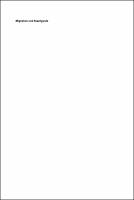Migration und Avantgarde
| dc.contributor.editor | Bung, Stephanie | |
| dc.contributor.editor | Zepp, Susanne | |
| dc.date.accessioned | 2020-05-07T15:47:32Z | |
| dc.date.available | 2020-05-07T15:47:32Z | |
| dc.date.issued | 2020 | |
| dc.identifier | Book_9783110679366_20200507_3 | |
| dc.identifier | OCN: 1153555196 | |
| dc.identifier.issn | 0178-7489 | |
| dc.identifier.uri | http://library.oapen.org/handle/20.500.12657/37599 | |
| dc.language | German | |
| dc.relation.ispartofseries | mimesis | |
| dc.subject.classification | thema EDItEUR::D Biography, Literature and Literary studies::D Biography, Literature and Literary studies::DS Literature: history and criticism | en_US |
| dc.subject.classification | thema EDItEUR::D Biography, Literature and Literary studies::DS Literature: history and criticism::DSB Literary studies: general | en_US |
| dc.subject.classification | thema EDItEUR::D Biography, Literature and Literary studies::DS Literature: history and criticism::DSB Literary studies: general::DSBH Literary studies: c 1900 to c 2000 | en_US |
| dc.subject.other | Avant-garde movements | |
| dc.subject.other | Migration | |
| dc.subject.other | Surrealism | |
| dc.subject.other | Decoloniality | |
| dc.title | Migration und Avantgarde | |
| dc.type | book | |
| oapen.abstract.otherlanguage | This volume is devoted to literature and the arts that were created in Paris from 1917–1962. The starting point is Vilém Flusser's conviction that migration experience and cultural innovation should be closely linked. France became the world's second most important immigration country after the United States in the interwar period. Authors came to the French metropolis from Eastern Europe, after the strengthening of the fascists from Italy, after 1933 from Germany, after the Spanish Civil War and after the consolidation of the Estado Novo in Portugal. Artists from Latin America were also present in Paris, and the Congrès international des écrivains pour la défense de la culture in June 1935 made the city the centre of intellectual resistance to fascism. But writers from all over the world also migrated to France after the Second World War. In addition to almost all languages of Romania, the articles also take into account the Arabic, Hebrew, German, Russian and Polish literature. This comparative approach can reveal unusual perspectives, relationships and fault lines. | |
| oapen.identifier.doi | 10.1515/9783110679458 | |
| oapen.relation.isPublishedBy | 2b386f62-fc18-4108-bcf1-ade3ed4cf2f3 | |
| oapen.imprint | De Gruyter | |
| oapen.series.number | 76 | |
| oapen.pages | 376 | |
| oapen.place.publication | Berlin/Boston |

